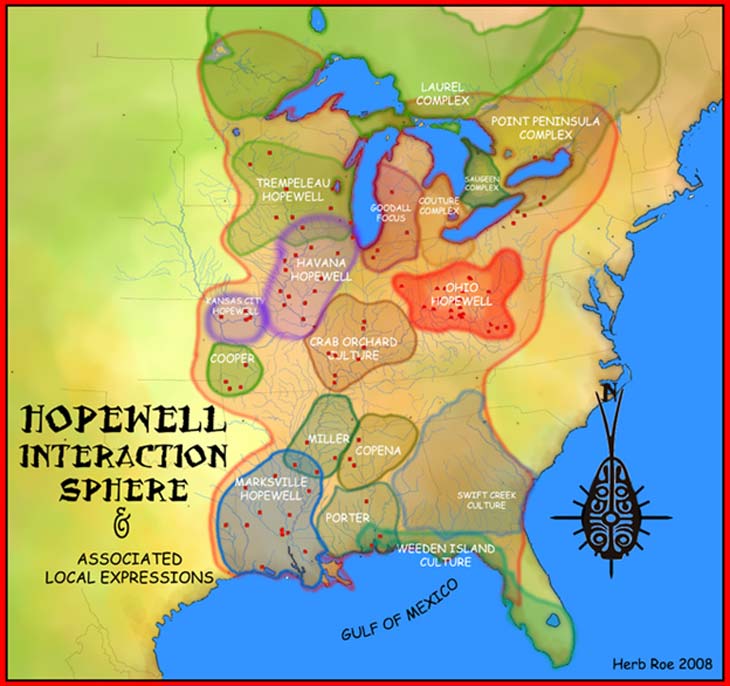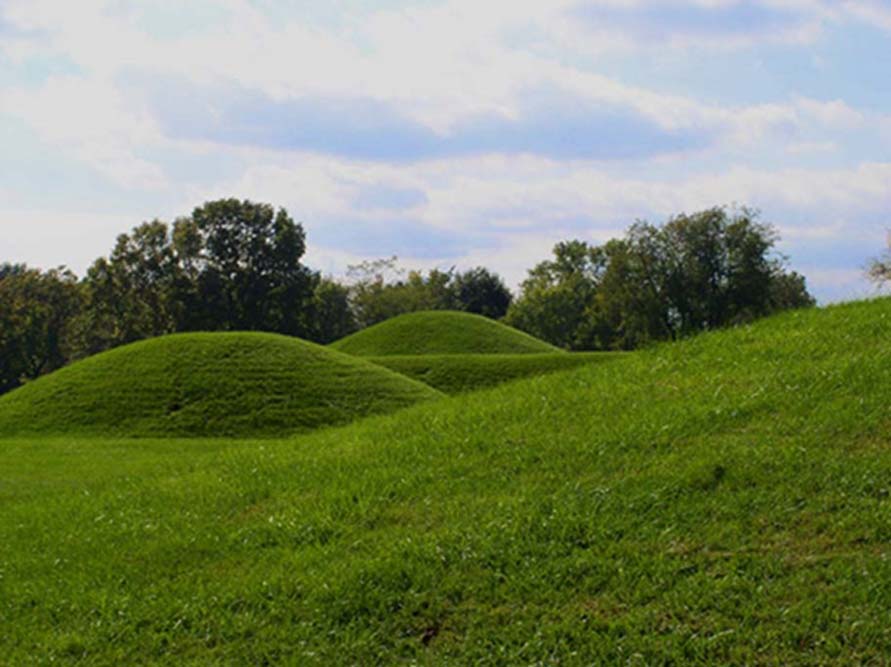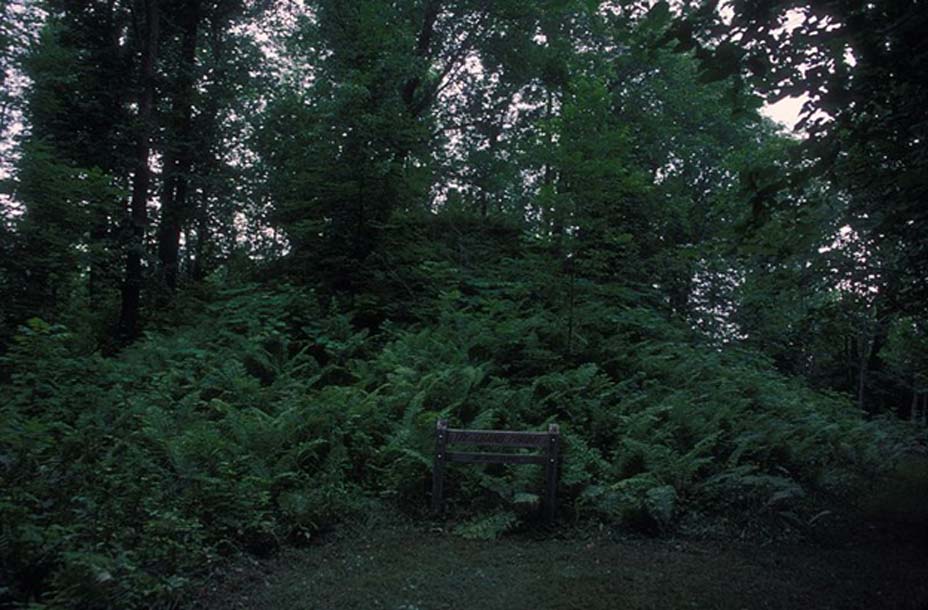
Landscape of the Ancients: The Hopewellian Burial Mounds Lift the Veil on Prehistoric Native American Cultures
The Prehistoric Native Americans of the Hopewell culture (Middle Woodland Period) constructed burial mounds filled with precious artifacts such as shells, copper and silver items, obtained from established trading networks crisscrossing America.
Minnesota Hopewell Mound Builders
Between 200 BC and 500 AD, the State of Minnesota was host to several manifestations of the culture of the Hopewell mound builders. Many archaeologists believe that Minnesota Hopewell culture was the result of a diffusion of traits of the contemporary Havana Hopewell of Illinois and Wisconsin. According to Gibbon the traits of Havana Hopewell may well have spread into Minnesota, via a system of vision questing wherein exotic objects were considered to bestow supernatural powers or attainment upon their owners. This situation may have given rise to the practices of people involved in the Malmo culture centered in the region around Mille Lacs. The Malmo people were organized as small bands of seasonal hunters, who buried their dead in conical mounds. Malmo sites typically consist of groups of tumuli containing bundle burials with no grave goods. Ceramics from these sites indicate ties with other Hopewellian groups in north-eastern Iowa, south-western Wisconsin and Illinois.

A map showing the Hopewell Interaction Sphere and various local expressions of the Hopewell cultures. (Herb Roe/CC BY-SA 3.0)
Extended Trade Networks of Exotic Materials
The Howard Lake Hopewell Complex in southern east-central Minnesota has also been associated with extensions of the Havana Hopewell. According to Constance Arzigian, the Howard Lake culture may have been part of a logistics network that circulated exotic materials such as copper and Wisconsin Pipestone to the Hopewell groups in the south. The Howard Lake mound group in Anoka County consists of one large and five smaller tumuli situated at the eastern edge of Howard Lake. Mound 3 was excavated in 1950, revealing a large rectangular burial pit beneath the mound. The pit contained at least 19 bundle reburials and one cremation, which had been burned elsewhere before it was deposited. Six of the burials were associated with red ocher and one of these featured a clay death mask.

Hopewell mounds from the Mound City Group in Ohio (Herb Roe/CC BY-SA 3.0)
The Laurel Culture Spanned More Than a Thousand Years
Perhaps the most extraordinary manifestation of Hopewellian culture in Minnesota is known as The Laurel Culture or Rainy River Aspect. Occupying northern Minnesota, north-western Ontario, eastern Manitoba, southern Quebec and areas of Michigan, the Laurel culture has been alternately attributed to contact with Hopewell groups in southern Ontario, Ohio, Illinois, or southern Minnesota, even though Laurel itself is considered a unique cultural expression in its own right. Laurel artifacts include a series of copper objects such as beads, flakers, bracelets and awls, as well as antler harpoons, stemmed and notched projectile points, grinding stones and potteries similar to Middle Woodland varieties from Ontario. One of the most remarkable aspects of the Laurel culture is its extreme chronological expanse, dating from 200 BC - 1100 / 1200 AD in some regions, representing of one of the only Hopewellian traditions to persist for many centuries after the collapse of the Ohio Valley center between 400 and 500 AD.

Grand Mound located along the banks of the Rainy River. (CC BY-SA 3.0)




